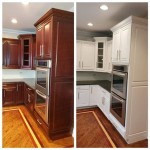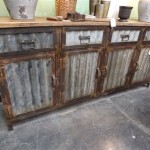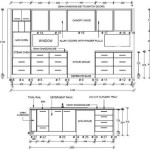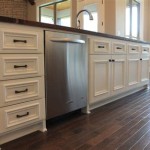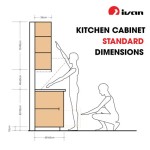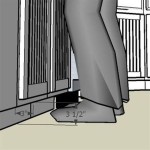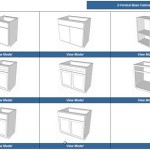Illuminating Kitchens: A Comprehensive Guide to LED Strip Lights for Cabinets
Kitchen cabinet LED strip lights have become increasingly popular for homeowners seeking to enhance the functionality, aesthetics, and energy efficiency of their kitchens. These versatile lighting solutions offer targeted illumination for countertops, shelves, and interior cabinet spaces, transforming ordinary kitchens into well-lit and visually appealing environments. This article provides a detailed overview of kitchen cabinet LED strip lights, exploring their benefits, types, installation considerations, and selection criteria.
Traditional kitchen lighting often consists of a central overhead fixture, which can create shadows and insufficient light for tasks performed on countertops or inside cabinets. Ambient lighting alone frequently fails to provide the focused illumination necessary for food preparation, organization, and showcasing kitchenware. LED strip lights directly address these shortcomings by providing localized, bright, and energy-efficient lighting precisely where it is needed.
The advantages of integrating LED strip lights into the kitchen are numerous. Beyond improved visibility, they contribute to a more modern and sophisticated aesthetic, enabling homeowners to customize the ambiance of their kitchens to suit different moods and occasions. Furthermore, LED technology consumes significantly less energy compared to traditional incandescent or fluorescent lighting, resulting in lower electricity bills and a reduced environmental footprint.
Key Benefits of Kitchen Cabinet LED Strip Lights
Kitchen cabinet LED strip lights offer a range of advantages that contribute to both the practical and aesthetic aspects of kitchen design. The following key benefits highlight their significance:
Enhanced Visibility and Functionality: The primary benefit of LED strip lights is the significant improvement in visibility they provide. By illuminating countertops and cabinet interiors, these lights eliminate shadows and make it easier to perform tasks such as food preparation, cooking, and locating items. This enhanced visibility contributes to greater safety and efficiency in the kitchen.
Improved Aesthetics and Ambiance: LED strip lights can dramatically enhance the visual appeal of a kitchen. They can be used to highlight architectural features, create a warm and inviting atmosphere, or add a touch of modern elegance. The ability to control the color and brightness of the lights allows homeowners to customize the ambiance of their kitchen to suit their personal preferences and the time of day.
Energy Efficiency and Cost Savings: LED technology is significantly more energy-efficient than traditional lighting options. LED strip lights consume a fraction of the energy used by incandescent or fluorescent bulbs, resulting in substantial cost savings on electricity bills over the lifespan of the lights. This energy efficiency also contributes to a reduced environmental impact.
Increased Home Value: Upgrading kitchen lighting with LED strip lights can increase the overall value of a home. A well-lit and aesthetically pleasing kitchen is a major selling point for potential buyers. The modern look and energy efficiency of LED lighting can make a home more attractive and desirable.
Long Lifespan and Durability: LED lights have a significantly longer lifespan than traditional light bulbs. This means that homeowners can enjoy years of reliable lighting without the need for frequent replacements. LED strip lights are also durable and resistant to vibration and impact, making them ideal for use in the kitchen environment.
Types of Kitchen Cabinet LED Strip Lights
The market offers a variety of LED strip lights suitable for kitchen cabinet applications. Understanding the different types and their features is crucial for selecting the best option for specific needs and preferences. The following categorizes the most common types:
Flexible LED Strip Lights: These are the most versatile type of LED strip lights. They are thin, flexible, and can be easily cut to size, allowing for installation in a wide range of spaces. Flexible strips are typically available with an adhesive backing for easy mounting. They are often used for under-cabinet lighting, inside cabinets, and accent lighting.
Rigid LED Strip Lights: These lights are mounted on a rigid circuit board, offering greater durability and a more uniform light output compared to flexible strips. Rigid strips are often used in areas where a more robust lighting solution is required, such as inside drawers or along shelves. They may require mounting clips or brackets for installation.
Waterproof LED Strip Lights: Designed for use in areas with high humidity or potential water exposure, waterproof LED strip lights are encased in a protective silicone or epoxy coating. These lights are ideal for under-cabinet lighting near sinks or dishwashers. They offer added safety and peace of mind in wet environments.
Color-Changing LED Strip Lights (RGB): These lights offer the ability to change the color of the light output, allowing for customization of the kitchen ambiance. RGB LED strip lights use a combination of red, green, and blue LEDs to create a wide range of colors. They are often controlled by a remote or smartphone app.
Dimmable LED Strip Lights: Dimmable LED strip lights allow homeowners to adjust the brightness of the light to suit their needs and preferences. These lights are often used in conjunction with a dimmer switch or control module. They offer greater flexibility and control over the kitchen lighting environment.
COB (Chip on Board) LED Strip Lights: COB LED strips are constructed with multiple LED chips closely packed together on a single substrate. This configuration results in a smoother, more uniform light output without visible individual LED dots. They are often preferred for applications where seamless illumination is desired.
Installation Considerations for Kitchen Cabinet LED Strip Lights
Proper installation is crucial for ensuring the longevity, performance, and safety of kitchen cabinet LED strip lights. Careful planning and attention to detail are essential. The following considerations should be taken into account during the installation process:
Power Source: Determine the location and availability of a suitable power source. LED strip lights typically require a low-voltage DC power supply. This power supply can be plugged into a standard electrical outlet or hardwired into the kitchen's electrical system. Ensure that the power supply is properly rated for the total wattage of the LED strip lights.
Wiring and Connections: Use appropriate wiring and connectors to ensure secure and reliable connections. Follow all electrical codes and safety guidelines. It is recommended to use a licensed electrician for any hardwiring or complex electrical work. Consider using wire connectors specifically designed for low-voltage LED lighting.
Surface Preparation: Clean and prepare the surface to which the LED strip lights will be attached. Remove any dirt, grease, or debris. If using adhesive-backed strip lights, ensure that the surface is smooth and dry for optimal adhesion. In some cases, it may be necessary to use mounting clips or brackets for added security.
Light Placement: Carefully plan the placement of the LED strip lights to achieve the desired lighting effect. Consider the angle of the light, the distance from the surface being illuminated, and the potential for shadows. Experiment with different placements to find the optimal configuration. For under-cabinet lighting, position the strip lights towards the front of the cabinet to illuminate the countertop effectively.
Safety Precautions: Always disconnect the power supply before working with electrical wiring. Wear appropriate safety gear, such as gloves and eye protection. Follow all manufacturer's instructions and safety guidelines. If unsure about any aspect of the installation process, consult a qualified electrician.
Concealing the Strip Lights: Consider how the LED strip lights and their wiring will be concealed. Using light diffusers or light covers will soften the light and hide the LED chips. This will also eliminate any glare that might occur. Wire channels can be used to neaten and hide cables.
Choosing the right LED strip lights for kitchen cabinets involves several considerations, including brightness, color temperature, voltage, and the overall design aesthetic. Higher lumen output will provide more brightness, while color temperature (measured in Kelvin) determines the warmth or coolness of the light. Lower Kelvin numbers (2700K-3000K) produce a warm, yellowish light, while higher Kelvin numbers (4000K-5000K) produce a cooler, whiter light. Selecting the appropriate voltage and ensuring compatibility with the existing electrical system are also essential for safe and efficient operation.
By carefully considering these factors, homeowners can select and install kitchen cabinet LED strip lights that enhance the functionality, aesthetics, and energy efficiency of their kitchens, creating a more enjoyable and inviting space.

How To Choose And Install Led Strip Lights For Kitchen Cabinets

Kitchen Cabinet Lighting Using Warm White Led Strip Lights
Led Under Cabinet Lighting Projects How To Use Strip Lights

The Ultimate Guide To Choosing Best Led Strip Lights For Your Home Simple Lighting Blog

How To Choose And Install Led Strip Lights For Kitchen Cabinets

Led Strip Lights Overview Astrum Lighting And Design

Above And Under Cabinet Lighting Using 12vdc Ribbon Star Max Warm White Led Strip Lights

How To Choose And Install Led Strip Lights For Kitchen Cabinets

How To Install Under Cabinet Lighting For A Brighter Kitchen Step B Govee

Kitchen Under Unit Pelmet Plinth Display Cabinet Energy Saving Led Strip Lights
Related Posts

